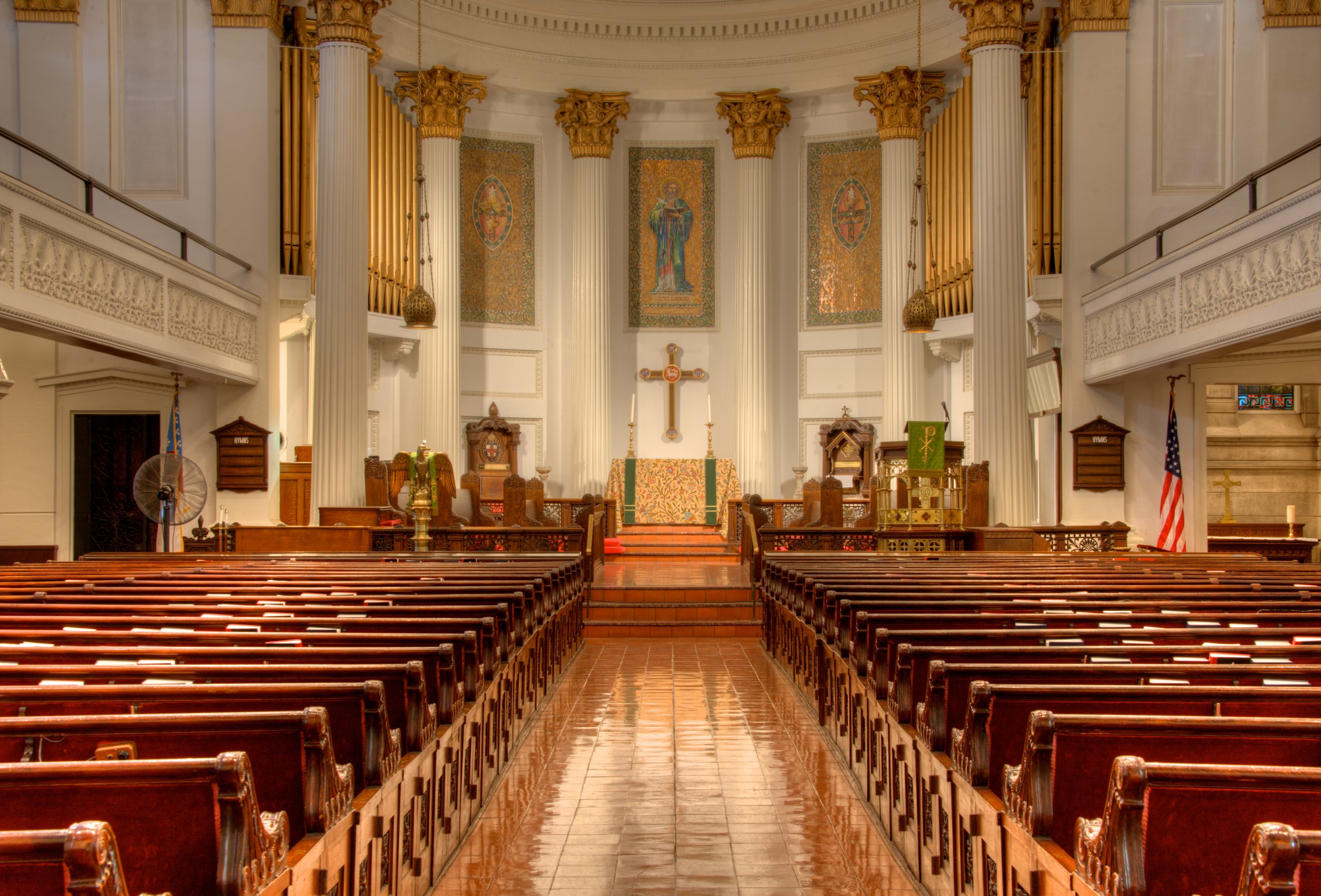music
History of the Organs and Choir
St. Luke’s Church and the Church of the Epiphany has had a rich music history since the beginning of both churches.
St. Luke's Church was one of the first churches in Philadelphia to employ a professional, vested choir around the time of its opening in 1840. After the merger of the two churches, and at the Church’s height before World War One, the choir was well regarded in the City as one of the best, counting approximately 40 choristers among its ranks - even accompanied by a paid harpist. In various times in the past the choir has performed with the Philadelphia Orchestra, such as a combined Christmas concert in 1914.
The first organ for St. Luke's Church was built in 1840 by E. and G.G. Hook of Boston and located in the gallery at the rear of the Church. It had 3 manuals (keyboards) and pedals. The full organ comprised 29 1/2 stops and 1,552 pipes; at that time it was noted to be one of the best church organs in Philadelphia. It was well received by visiting organists of the city.
The original organ was eventually replaced in 1877. The next organ was again built by E. and G.G. Hook & Hastings of Boston. The older Hook organ was traded in as part of the payment towards the new organ, as well as some of the pipe work used in the new organ. The second Hook organ was larger, with 51 stops.
At the merger, the organs from both churches were connected together by an up-and-coming organ builder, Ernest M. Skinner of Boston. In 1907 he installed a console in the chancel to play the Hook & Hastings in the back gallery and Church of the Epiphany's organ built by George Jardine of New York City in 1882 that had been placed in a large chamber on the left side of the chancel. The console controlled 88 ranks of pipes from both organs.
During the tenure of Dr. Steele, rector, and H. Alexander Matthews, organist-choirmaster, the church purchased a new pipe organ which was installed in 1925. The organ was built by the Austin Organ Co. of Hartford, CT. At the time of its installation it was considered to be among the finest in the city. The Austin organ was completely installed in the front of the church. As part of this installation, an upper pipe loft was added above the lady chapel to accommodate an increased number of pipes. The Austin organ served the church longer than any other. At the time the Austin was built, the romantic era of organ building was in its prime; the organ's tone was dark and rich with various beautiful orchestral stops. It was also a time when most organists were playing transcriptions of orchestral and operatic music. To play older organ music such as Bach, Buxtehude and other Baroque composers, it sounded muddy.
In the early to mid-1990s, the Church felt it was time to do something about the Austin organ. Some wanted to restore it, others wanted to replace it with an electronic substitute, while others were in favor of rebuilding and enlarging it. Rebuilding and enlargement was the decided route.
Currently the organ has all of its Austin windchests, mechanicals, etc. During the tenure of Jonathan Bowen, current organist-choirmaster, the organ has been transformed into an instrument that is able to play organ music from just about any period. Its primary function is to play service music particularly in the Anglican style. Many of the ranks (sets) of pipes have been replaced to achieve this sound. Digitally sampled stops by Walker Technical Co. were added at the time of the rebuild in 1998 as well.
Despite space and funding limitations at the time of the rebuild, The Church of St. Luke and The Epiphany now has an organ that not only serves the needs of the parish but the community as well. The parish has always had great choral, orchestral, and chamber music ensembles using the space for performance. It is now currently the second largest church organ in Philadelphia. The total count of pipe and digital ranks currently stands at 150.





